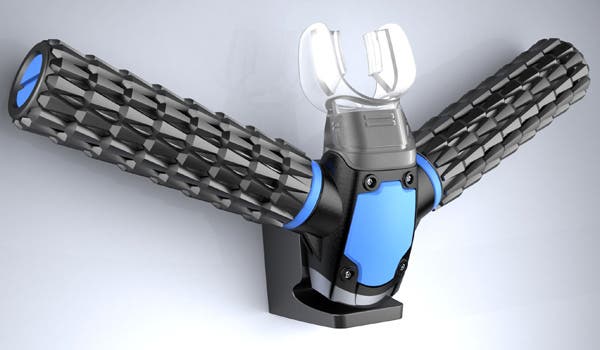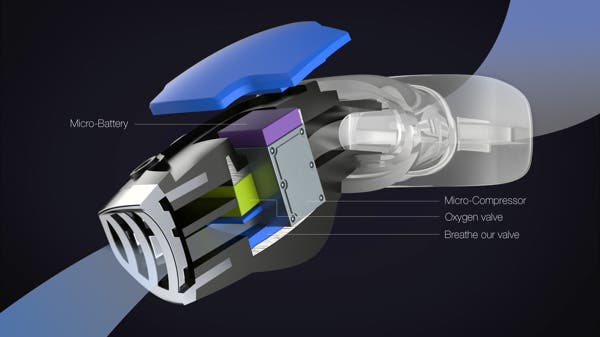South Korean designer Jeabyun Yeon has just unveiled his new concept of a scuba mask that would allow anyone to breathe underwater without requiring air tanks. His design, named the Triton, includes two arms linked to a mouth piece. The branching arms are designed to extract free oxygen atoms from the water and supply breathable air directly to the user.
The mask’s armos are covered in plastic scales that allow water to enter through small holes under them, to be redirected to a chamber where the oxygen is separated from water. This is achieved using an internal filter made up of fine threads with holes smaller than water molecules cut into them, allowing only air to pass through.
The gases are then compressed and stored in a miniature tank, ready for the diver to breathe it. The entire gadget is powered by a small, easily rechargeable microbattery. So far, the design is just a concept, but Yeon has high hopes that it will someday be turned into a commercial product that can completely replace an entire set of scuba gear.
That’s the theory. But I’m not sold on the Triton. My biggest issue with it is that it would just have to filter so much water to provide all the oxygen a human needs for a single breath. The average human need 500mls of air with every breath; going in, the air has a 21% oxygen concentration and a 16% concentration coming out, for a total of ~25mls of oxygen intake with every breath. Scientific literature places the concentration of oxygen at 6mg/L of ocean water so the Triton would have to go through…. about 6L of water for each breath (assuming our lungs can scrub almost all the oxygen in the air which they don’t)? I don’t really think it can do that.
That being said, finding a way to take oxygen out of seawater is a great idea. But Yeon needs to make this thing go through a lot of sea water very fast before it’s actually usable for diving. But I hope he does; this has the potential to become a James Bond-like piece of fancy gear, when and if it works.











